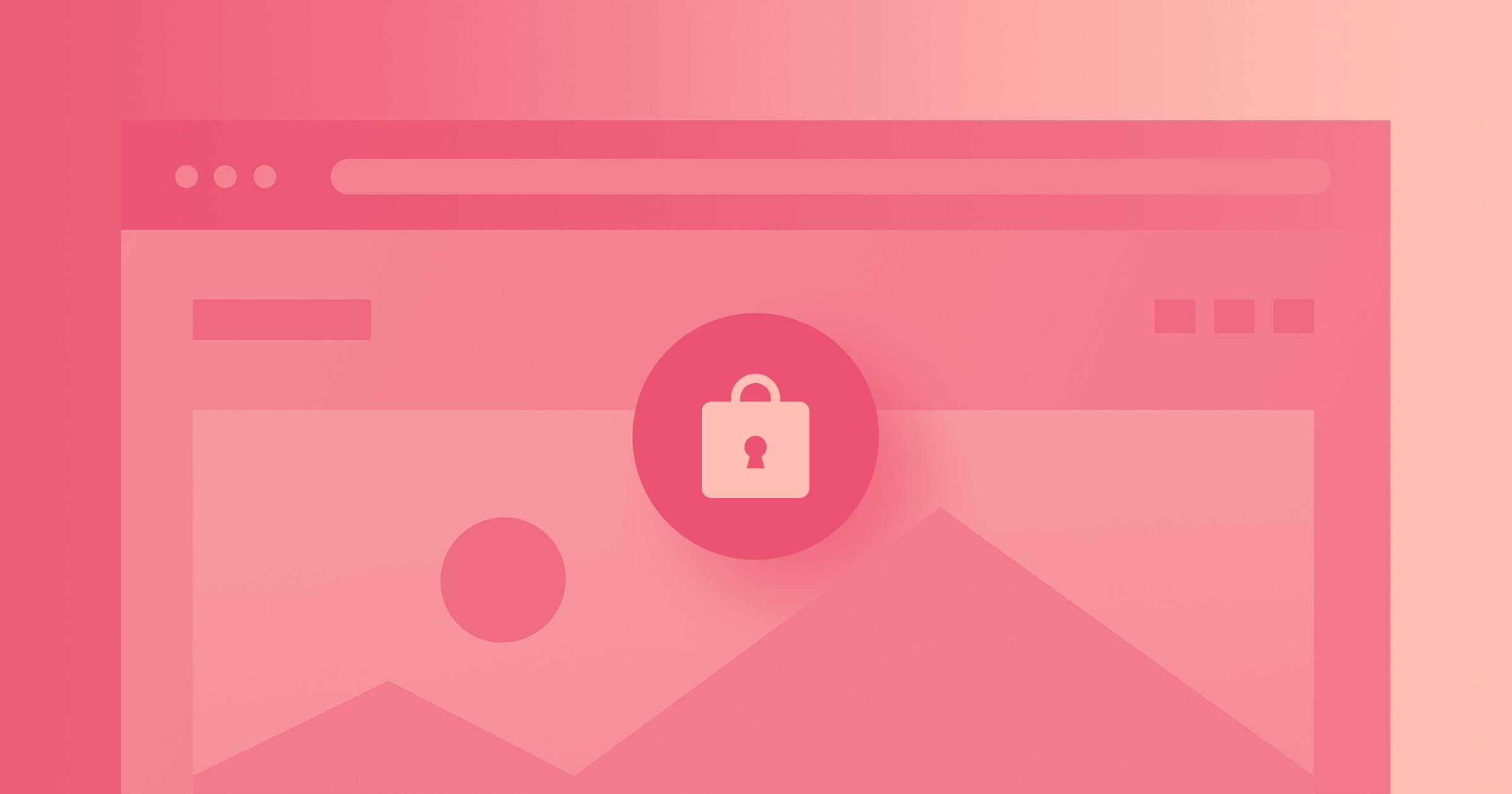Neglecting website security risks more than just data — you’re putting your brand’s reputation on the line.
Cyber threats are increasing. According to a 2025 data breach report by Verizon, 30% of breaches were linked to third-party actors, presenting a daunting challenge for businesses. Training and access controls effectively address in-house risks, but guarding against external threats requires a comprehensive and proactive approach.
While web design and development create platforms for interaction and conversion, website security ensures safe user access and builds brand credibility. It demonstrates your commitment to protecting visitors and cultivates lasting trust — making security measures more critical than ever in today's threat landscape.
The importance of cybersecurity and website checkers
As the frequency and severity of cyberattacks rise, cybersecurity measures are nonnegotiable for small business owners and multinational corporations — and not just for security reasons.
Studies from the U.S. National Telecommunications and Information Administration (NTIA) reveal that 73% of internet-using households worry about online privacy and security risks. As online safety concerns grow, users increasingly gauge their interactions on perceived security. Maintaining cybersecurity is as much about building and preserving brand credibility as it is about repelling cyber threats.
Trust can make or break a brand, and it’s about more than just data protection. Incorporating firewalls and encryption shield sensitive data like user information and credit card details, reducing legal and financial repercussions from security breaches. Although users might not understand the intricacies of security measures, they recognize safety symbols. For example, websites with Secure Sockets Layer (SSL) certificates have a padlock icon in the browser, signaling security and nurturing trust.
- Strengthen user trust by implementing robust security measures
- Protect sensitive data with encryption and secure hosting
- Regularly monitor and update your website
10 steps to keep your website secure in 2025
As cyber threats multiply, it’s crucial to fortify your defenses. Here are 10 steps to build robust countermeasures against cybercriminals.
1. Prevent spam
Spam overwhelms inboxes, comment sections, contact forms, and forums. Beyond being frustrating to read, search engine crawlers collecting and storing webpage data also interpret spam as poor-quality content, jeopardizing your website’s ranking and relevance.
Spam also carries a security risk. Cybercriminals disguised as reputable companies that send bulk marketing emails urging recipients to act form the backbone of phishing scams, leading unsuspecting users to expose sensitive information.
To prevent this, integrate CAPTCHA challenges and honeypots — tools offering straightforward tasks only humans can complete — to deter and trap spam bots and confirm authentic webpage access. Distinguishing genuine users from bots diminishes spam threats and lets you install content moderation systems for sustained security.
If you built your website with Webflow, consider using an integration to identify and moderate spam comments.
2. Protect your website from DDoS attacks
Distributed denial-of-service (DDoS) attacks flood websites with traffic, causing servers to crash and leaving sites temporarily out of action. This downtime disrupts normal website functions and allows hackers to inject malicious code.
For robust defense against these attacks, choose a trusted web hosting provider such as Webflow for advanced DDoS protection. After setting up your site, deploy protective hardware and software like firewalls, load balancers, and web application firewalls (WAFs). These tools actively supervise and manage your site’s traffic flow by filtering out suspicious or malicious activity such as repeated access attempts from a single IP address in a short time frame and irregular page navigation patterns.
3. Block brute force attacks
Brute force attacks involve hackers cycling through numerous username–password combinations until they find a match and breach a site. Prevent this by creating a strong password combining uppercase and lowercase letters, numbers, and special characters such as the ampersand (&) or hash (#). You can further fortify defense by limiting login attempts and deploying CAPTCHA tests following consecutive unsuccessful attempts to make it difficult for hackers to use brute force bots. Implementing two-factor authentication (2FA) also adds an extra layer of login protection.
4. Safeguard your site from cross-site scripting
Cross-site scripting (XSS) attacks occur when cybercriminals embed scripts into a webpage’s code. During regular browsing operations, like page rendering and executing JavaScript code, browsers such as Google Chrome and Mozilla Firefox can unintentionally download and process malicious code. This exposes users to malware and can even allow attackers to manipulate webpage content to their benefit, undermining site security and diminishing user trust.
Defend your website and browsers from XSS threats by installing content security policies (CSPs) that filter out hazardous scripts and questionable websites, helping browsers and servers only execute secure code.
5. Beware of SQL injection
SQL, short for Structured Query Language, is a programming language that lets users store, retrieve, and alter data in relational databases. Many companies rely on SQL to manage vast datasets, including product specifics, customer details, and business analytics.
Cybercriminals can exploit these databases with SQL injections, which introduce harmful commands that extract sensitive information, bypass login credentials, or expose database structures through user input fields such as contact forms and login pages. SQL injections jeopardize user privacy and security and allow cybercriminals to manipulate or delete vital data, undermining website functionality.
Counteract this threat by implementing parameterized queries and regular database audits. Parameterized queries interpret user inputs as data and not executable code, reducing the risk of running unintended commands. Routine database audits identify anomalous and suspicious activity early on, verifying legitimate database actions and confirming preventive measures like parameterized queries work correctly.



















Webflow Enterprise
Trusted by over 300,000 of the world’s leading brands, Webflow Enterprise empowers your team to visually build, manage, and optimize sophisticated web experiences at scale — all backed by enterprise-grade security.
6. Install an SSL certificate
Integrating a Secure Sockets Layer (SSL) certificate bolsters your website’s security by encrypting data between browsers and your site, protecting sensitive information like passwords and financial details.
Activating this certificate transitions your website from using Hypertext Transfer Protocol (HTTP) to Hypertext Transfer Protocol Secure (HTTPS) and provides an added layer of protection against hacker data interception by keeping data unreadable to unauthorized parties. Webflow enables SSL hosting by default on all new websites, and you can add a custom SSL certificate to any Webflow-designed site in your settings.
7. Back up website data
Hackers can cause data loss, but so can technical glitches and accidental erasures. For peace of mind, select a web hosting service that automatically creates and stores website backups. Webflow saves every design change and update to the cloud, and this backup feature comes standard with all site plans. You can even label and name each backup for quick retrieval.
8. Follow ISO 27018 compliance
ISO 27018 sets the global standard for securing personal data in the cloud, covering access controls, data processing, and privacy protocols.
Webflow-designed sites leverage Amazon Web Services — which complies with ISO 27018 standards — guaranteeing limitless and secure backups for your website and keeping your users’ personally identifiable information safe.
9. Use reliable online payment gateways
Payment gateways are secure platforms that authenticate and facilitate online transactions, acting as the intermediary between buyers and sellers to securely process payment data and protect sensitive financial information.
By using recognized third-party payment processors such as Stripe and PayPal, you adhere to the Payment Card Industry Data Security Standard (PCI DSS), a global set of security standards so that all companies accept, process, store, or transmit credit information in a secure environment. The PCI DSS establishes mandatory procedures and safeguards to protect cardholder data, such as encryption methods and access controls, guaranteeing secure and trustworthy transactions.
10. Regularly update your website
Regularly updating your content management system (CMS), plugins, and themes closes security vulnerabilities. Outdated software often has known weaknesses that cybercriminals can exploit, and consistently auditing and patching your website prevents hackers from taking advantage of these vulnerabilities.
- Check for and install the latest CMS patches
- Update all plugins to their newest versions
- Remove or disable unused themes or add-ons
- Perform routine security scans to detect vulnerabilities
Keep your website updated by setting routine website security checks to catch and address any issues promptly. Integrations and plugins help you monitor site performance, while site performance optimization maintains site speed, functionality, and responsiveness, enhancing the user experience and deterring potential security threats from lag or glitches.
These 10 steps — from spam prevention to regular updates — offer a strong foundation for safeguarding your site and your visitors’ information.
Build safe websites with Webflow
Website security is a multifaceted endeavor that demands constant vigilance and adaptation to emerging threats. As technology evolves, so do hackers. Finding a hosting provider that puts security first is a wise way to go.
Webflow follows strict protocols that build security right into your website. Build your next website with Webflow to keep your site — and your site visitors’ personal data — secure and safe from cybersecurity threats.

Build with Webflow
Break free from the constraints of traditional platforms. Migrate your site to visual-first platform that combines design flexibility with powerful CMS capabilities.




























